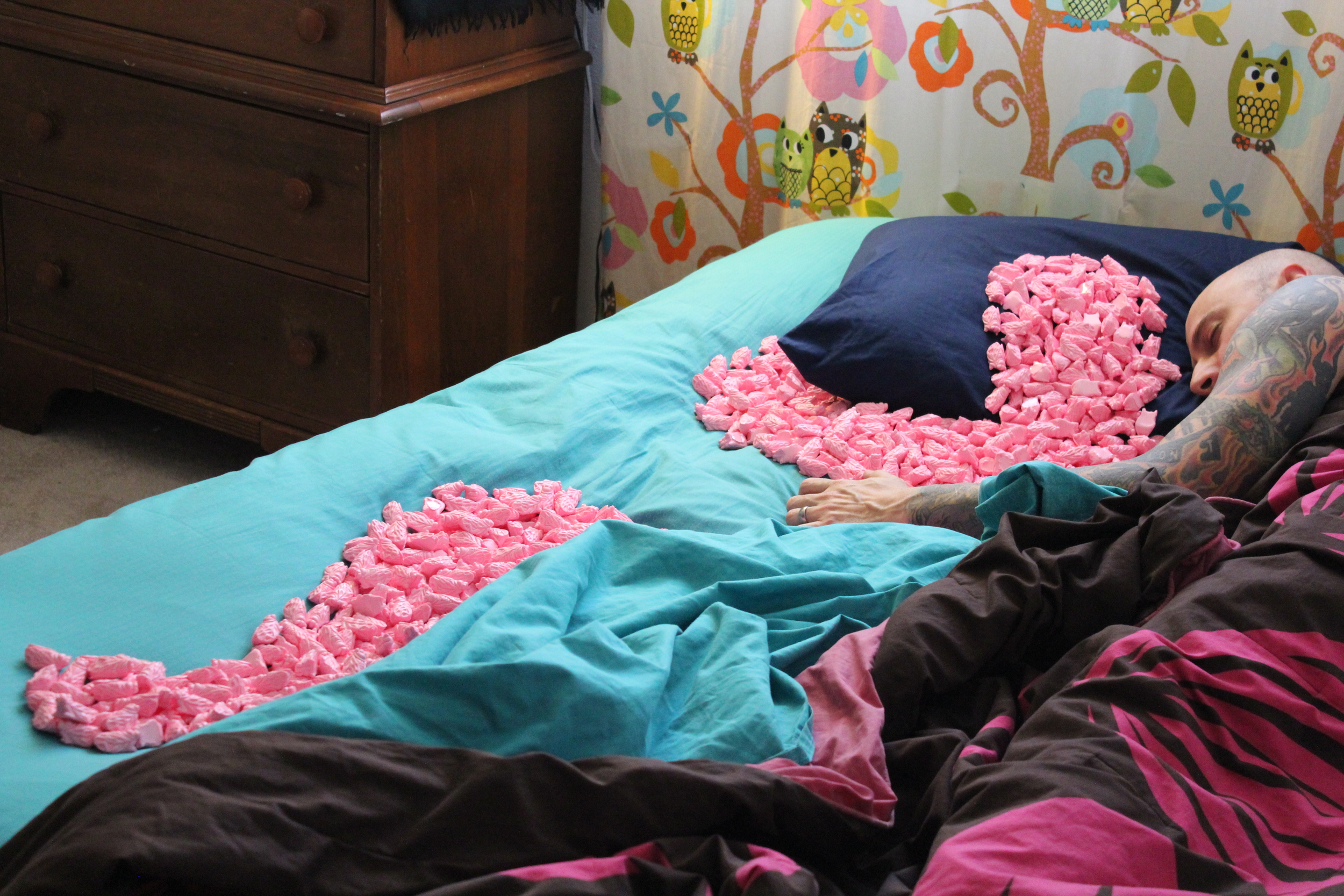As I have mentioned, in this new body of work -- "Survival Tactics" -- I am addressing themes of isolation, loss of identity, stigma, dehumanization and to a lesser degree: our society's obsession with diagnosis and medication. This has meant, by way of self analysis, taking specific imagery from my own psyche and developing a code of personal signifiers and internalized visual stereotypes and tropes and projecting them into the real world by way of distillation. This, I feel, will give way to a deeper, more universal exploration of how these themes may affect one's perception of the world. Literally, this requires of me to give corporeal form to the intangible with the hope that the work will ignite a healthy discourse amongst its viewers.
Initially, I began with free association writing exercises. I would wake up each morning and immediately write down whatever I could remember. I would sketch without purpose in a stream of consciousness. This ultimately led to my exploration of ink blots. Inkblot tests – specifically those compiled by Rorschach, are what psychology experts call “psychological projective tests.” It is believed that these tests are a way of getting into the depths of a person's subconscious. Therefore, to continue along this philosophical route, I tested myself to see what I might learn. Then, I began creating my own. I would recall a memory -- relive it. While in the throws of recollection, I would then make a blot. One became several, several became dozens. I studied these inkblots and began sketching what I thought I saw. As I sketched, I edited, discarding surface imagery and diving ever deeper. A pattern soon emerged. This pattern, coupled with the elements of the code I had been developing, led me to carefully manufacture reflective cut-outs that initially resemble the inkblots that first bore them. The few quickly became many.
My cutouts
A primary symbol in this language is the Cicada.
Cicadas live the majority of their lives underground, hidden from the world, before one day emerging to shed their shells and procreate. A common insect found across the globe, the Cicada is the subject of much folklore. Generally speaking, they often represent transformation, reincarnation and evanescence. Of special importance is the fact that the cicada molts, leaving behind an empty shell.
A Cicada shedding its shell
Metaphorically, this particular trait -- in regards to my thesis, is a manifestation of the empty, hollow feelings associated with depression, while the suggestion of transformation or leaving the past behind evokes a sense of growth. In antiquity, this speaks to enlightenment. For the purpose of my code however, it has come to represent self awareness. In ancient china, glass cicadas were often placed in the mouths of the dead to symbolize rebirth, which aligns them to the realm of the pyschopomp, which is believed to guide a soul from one life to the next.
Crows as pyschopomps
The Cicada is, for the most part, benign and often overlooked until the end of it's life cycle, when it emerges back into the world to procreate. It's "chittering" song, which seems directionless due to it's low pitch is, appropriately, created by vibrating a hollow chamber within the cicadas own body. This song is akin to white noise or static and is for me, an iteration of the rapid or intrusive thinking that is symptomatic of mania: intense, overwhelming and impossible to escape. Naturally, this lead me into an exploration of diagnosis and treatment.
Among the many, many pharmaceuticals associated with treating such symptoms, is Valproate semisodium or, as it is more commonly known: Depakote. Based on personal experience, I chose this particular medication as representation for all prescribed medications primarily because of it's pink, candy-like coating, but also for it's perversely reminicent scent of circus peanuts. This association with cheap candy sparked the production of 5,840 pink plastic, candy-like cicadas. Each one represents a dose of medication that passed through my body during the first four years of treatment. Stylistically, I chose a life-sized bone carving of a cicada from China, in order to echo the historical affiliation with Asian antiquity as described earlier.
Circus Peanuts
Depending on the context, the cicadas I have made allow me enough latitude to explore their potential as a surrogate for the body as well as invaders or even -- on some level, purification. To better explore this dialog between the cicadas and their environment, I have been photographing them in public/private scenarios as a type of place holder for the individual.
A place hiolder
This exercise has brought me to an exploration of the absence of the body. The shell of the cicada, as it were. Early on, I had been thinking of the body in distress. Images of the Pompeii figures came to mind and I explored the themes they suggested through sculpture and drawing. There was a sense of fragility in those frozen moments that whispered in my ear, and on a primal level, informed the core of my work. Also, the figures suggested a notion of the body as a container -- literally a vessel, hollowness.
I explored sculpting a figure in a huddled, defensive pose. Of casting a shell for it. Then I created a life cast of a figure emerging from nothing, into nothing. These didn't feel quite right. I focused again on the shell and have since come up with the idea of defining negative spaces. The absence of the body. The emptiness that remains or perhaps, the emptiness finally left behind once the body has gone.
Form
What was left behind
Absence of the form








